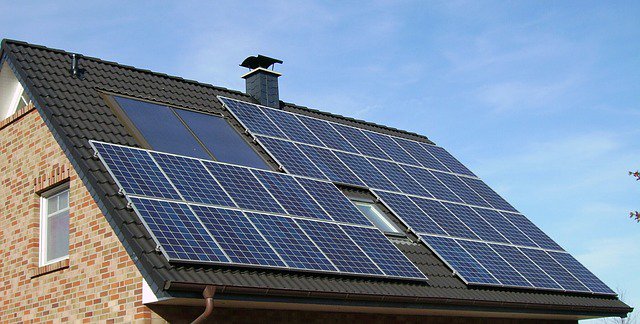With new homes being built with eco-friendly design in mind, older properties can prove the worst offenders when it comes to their carbon footprint.
But making alterations to your existing home can be costly, running into hundreds or even thousands of pounds.
So, how can homeowners make their properties kinder to the environment while keeping costs down?
We spoke to the Welsh government and Energy Saving Trust to find out.
How do you make an old house eco-friendly?
All homes have the potential to become more energy efficient and reduce carbon emissions.
The Energy Saving Trust’s head of UK energy Laura McGadie said the first step in cutting carbon emissions – and bills – was to take control of your heating.
“Make sure you understand your heating controls and set them to only heat the rooms you need, when you need them, and not above the required temperature,” she said.
“To do this effectively, you will need a decent set of heating controls which, for most central heating systems, includes a timer or programmer, a room thermostat and thermostatic radiator valves. Fitting and using these properly could save you £75 a year on your bills and reduce your carbon emissions by 320kg.”
For a quick and cost-effective improvement, insulate any exposed hot water pipes, along with your hot water cylinder if you have one.
Around a third of heat in an insulated home is lost through the walls, according to the Energy Saving Trust.
Most homes in the UK have either solid walls, which can be insulated from the inside or outside, or cavity walls, which have a gap that can be filled with insulation.
Installing solid-wall insulation could save a gas-heated, semi-detached home around 930kg of carbon dioxide emissions a year.
The Welsh government said changes should be tailored to each home.
“The changes are likely to be a mixture of improvements to the building fabric (better insulation), changes to the heating systems (low carbon heat system), together with energy storage and renewable energy generation such as batteries and solar PV,” said a spokesperson.
“The electricity supplied by the grid is becoming more environment-friendly every day as additional renewable generation increases. This in turn makes homes greener when using that electricity.
“Choosing a green energy supply or a flexible low-carbon tariff is a simple step towards greening your home.”
How much does it cost to make my home eco-friendly?
The costs of reducing your home’s carbon footprint can vary from a few pounds for better draught proofing or using low-energy lightbulbs, to hundreds of pounds for loft insulation or a larger investment of thousands of pounds for renewable generation such as whole-house insulation systems.
Schemes are available to support lower income households meet the cost of home energy efficiency improvements, such as the Welsh Government’s Warm Homes Programme.
This has led to more than 61,400 lower-income households improving their home energy efficiency, reducing fuel bills and carbon emissions.
Welsh households can also benefit from the UK government’s Energy Company Obligation Scheme, which provides insulation and low-carbon heating to lower income households.
Read more: BBC




